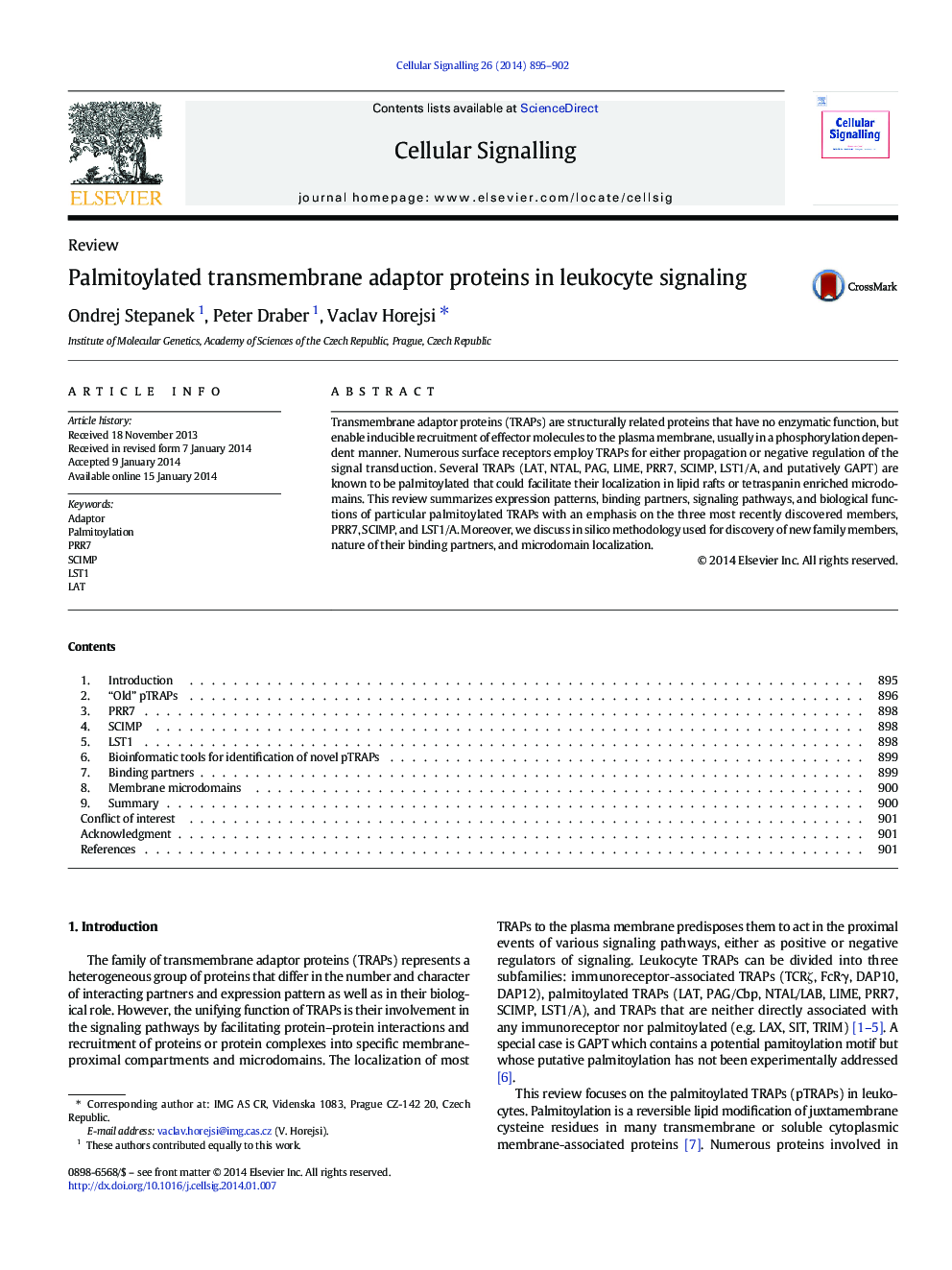| Article ID | Journal | Published Year | Pages | File Type |
|---|---|---|---|---|
| 10815472 | Cellular Signalling | 2014 | 8 Pages |
Abstract
Transmembrane adaptor proteins (TRAPs) are structurally related proteins that have no enzymatic function, but enable inducible recruitment of effector molecules to the plasma membrane, usually in a phosphorylation dependent manner. Numerous surface receptors employ TRAPs for either propagation or negative regulation of the signal transduction. Several TRAPs (LAT, NTAL, PAG, LIME, PRR7, SCIMP, LST1/A, and putatively GAPT) are known to be palmitoylated that could facilitate their localization in lipid rafts or tetraspanin enriched microdomains. This review summarizes expression patterns, binding partners, signaling pathways, and biological functions of particular palmitoylated TRAPs with an emphasis on the three most recently discovered members, PRR7, SCIMP, and LST1/A. Moreover, we discuss in silico methodology used for discovery of new family members, nature of their binding partners, and microdomain localization.
Keywords
Related Topics
Life Sciences
Biochemistry, Genetics and Molecular Biology
Biochemistry
Authors
Ondrej Stepanek, Peter Draber, Vaclav Horejsi,
